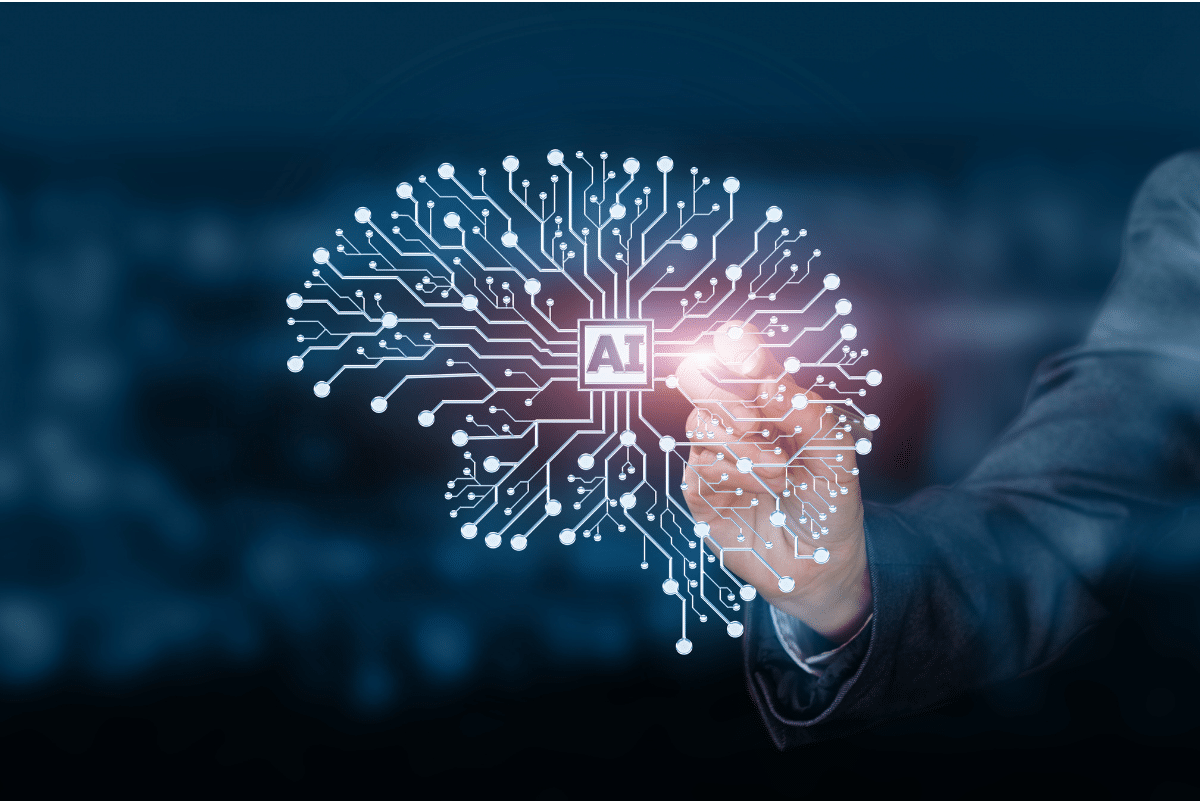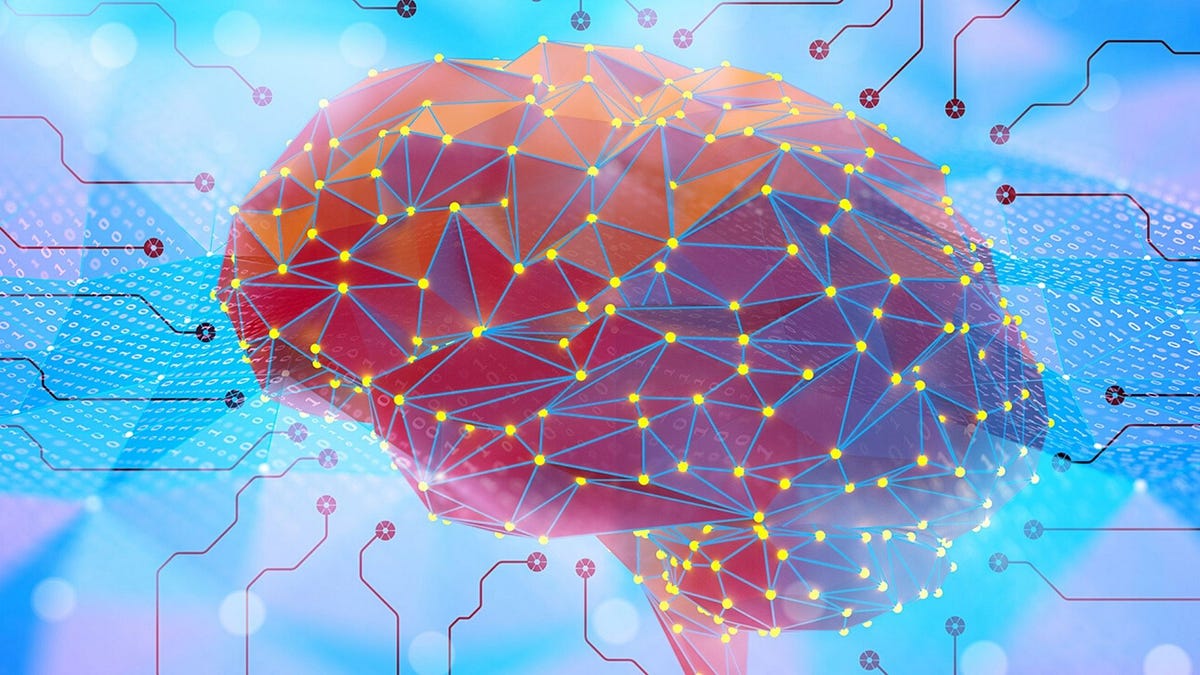Symbolic AI and Reasoning: Unlocking Advanced Problem Solving and Decision-Making
Imagine a computer system that thinks like a human, using logical rules and symbols to solve complex problems. This is Symbolic AI, a branch of artificial intelligence that mimics human-like reasoning through explicitly defined knowledge representation and logical processing.
Unlike newer AI approaches that learn from massive datasets, Symbolic AI represents knowledge through carefully crafted symbols and rules that mirror human thought processes. For instance, much like how a doctor uses medical knowledge to diagnose patients, a Symbolic AI system applies logical rules to reach conclusions based on available information. This transparency in reasoning is valuable in fields where decisions need clear explanations.
At its core, Symbolic AI operates on a foundational concept: knowledge can be represented through formal logic and manipulated using well-defined rules. Just as humans use language and logic to express ideas and solve problems, these systems process information through symbolic manipulation, transforming abstract concepts into computable forms that machines can understand and reason with.
As we explore the evolution and impact of Symbolic AI, we will discover how this approach has shaped the field of artificial intelligence, from its early roots in the 1950s to its modern applications. We will examine its core techniques in knowledge representation and logical reasoning, analyze its contemporary advances including neural-symbolic integration, and investigate practical implementations across various industries. Whether you are a developer implementing rule-based systems or simply curious about AI’s foundations, understanding Symbolic AI provides crucial insights into how machines can emulate human reasoning.
Through this journey, we will uncover how Symbolic AI continues to influence modern AI development, particularly in areas where explainable decision-making and logical reasoning are paramount. While newer AI approaches have emerged, the principles of Symbolic AI remain fundamental to our quest for creating truly intelligent systems.
Historical Context of Symbolic AI
The dawn of symbolic artificial intelligence marks a significant chapter in computer science history. After World War II, pioneers like Alan Turing began exploring machine intelligence. Turing’s 1950 paper Computing Machinery and Intelligence
proposed that machines could think and reason using manipulatable symbols.
The field gained momentum with the Dartmouth Conference of 1956, where figures like John McCarthy, Marvin Minsky, and Claude Shannon gathered to formalize artificial intelligence. This event catalyzed the development of symbolic AI, aiming to create machines capable of human-like symbolic reasoning and logic.
A breakthrough came with the Logic Theorist by Allen Newell and Herbert Simon in 1956. This program proved mathematical theorems by manipulating symbols according to logical rules, showing that machines could perform reasoning tasks previously thought exclusive to humans. The success of Logic Theorist spurred research into rule-based systems and symbolic manipulation.
Throughout the 1960s and early 1970s, symbolic AI thrived with expert systems like DENDRAL and MYCIN, which replicated human expertise in specific domains through explicit knowledge representation. These systems demonstrated symbolic AI’s potential to solve real-world problems through logical reasoning and rule application.
However, the field faced significant challenges during the AI Winters of the 1970s and late 1980s. The limitations of purely symbolic approaches, such as encoding common-sense knowledge and the brittleness of rule-based systems, led to reduced funding and enthusiasm. Researchers realized that achieving human-like intelligence required more than symbolic manipulation.
A physical symbol system has the necessary and sufficient means for general intelligence.
Despite these setbacks, the legacy of symbolic AI influences modern artificial intelligence. The principles of knowledge representation and logical reasoning from this era remain relevant, especially in hybrid systems combining symbolic reasoning with machine learning.
The history of symbolic AI reflects human ingenuity and our quest to understand and replicate intelligence.
Core Techniques in Symbolic AI
Symbolic artificial intelligence employs sophisticated techniques that enable machines to reason and solve problems similarly to human cognition. These foundational approaches shape how AI systems process information and make decisions.
Formal logic is the bedrock of symbolic AI, providing a rigorous framework for representing and manipulating knowledge. Propositional logic, the simplest form, deals with true/false statements and basic logical operations like AND, OR, and NOT. For example, a medical diagnosis system might use the logic: IF (fever AND cough) OR difficulty_breathing THEN check_for_respiratory_infection.
Building on this foundation, first-order logic extends these capabilities by introducing variables and quantifiers, allowing AI systems to make more nuanced statements about objects and their relationships. This enables expressions like “for all patients with condition X, treatment Y is recommended” – essential for expert systems in healthcare and other domains.
Knowledge representation focuses on organizing information in ways that computers can effectively process. Semantic networks, one popular method, represent knowledge as a graph where nodes are concepts and edges show relationships between them. Imagine a family tree where each person is a node, connected by relationships like “parent of” or “sibling of” – semantic networks use this principle to map out complex domains of knowledge.
Frames offer another powerful way to structure information, acting like digital templates for storing knowledge about objects or situations. A frame for a “car” might include slots for attributes like color, make, model, and year, along with default values and rules about what values are permissible. This structured approach helps AI systems organize and reason about complex real-world objects and scenarios.
Production systems tie everything together by implementing rules that operate on this knowledge base. These systems use IF-THEN rules to model expert knowledge and make decisions. For instance, a symbolic AI system might use rules like “IF the temperature is rising AND pressure is above threshold THEN trigger cooling system” in industrial control applications.
| Technique | Description | Example |
|---|---|---|
| Formal Logic | Uses true/false statements and logical operations to represent knowledge. | IF (fever AND cough) OR difficulty_breathing THEN check_for_respiratory_infection |
| First-Order Logic | Extends propositional logic with variables and quantifiers for more nuanced statements. | For all patients with condition X, treatment Y is recommended |
| Semantic Networks | Represents knowledge as a graph with nodes for concepts and edges for relationships. | Family tree with nodes for people and edges for relationships like “parent of” |
| Frames | Structured templates for storing knowledge about objects or situations. | A frame for a “car” might include slots for attributes like color, make, model, and year |
| Production Systems | Uses IF-THEN rules to model expert knowledge and make decisions. | IF the temperature is rising AND pressure is above threshold THEN trigger cooling system |
The synergy between these techniques – formal logic for reasoning, knowledge representation for organizing information, and production systems for decision-making – creates AI systems capable of tackling complex problems in fields ranging from medical diagnosis to legal reasoning. While modern AI has embraced newer approaches like machine learning, these symbolic techniques remain valuable for applications requiring explicit reasoning and transparent decision-making processes.
Contemporary Advances in Symbolic AI


Symbolic AI stands at a crossroads of innovation, merging traditional rule-based approaches with cutting-edge machine learning capabilities. Recent advances have transformed this field through the emergence of neural-symbolic systems, which combine the interpretability of symbolic reasoning with the adaptive power of neural networks.
One significant development is the rise of neural-symbolic computing, which amalgamates the interpretability and structured knowledge representation of symbolic reasoning with the adaptive learning capabilities of deep neural networks. This hybrid approach addresses long-standing limitations of pure neural or symbolic systems, offering both the flexibility of machine learning and the transparency of logical reasoning.
Explainable AI (XAI) has emerged as another crucial advancement in modern symbolic AI. As AI systems become more complex, the ability to understand and interpret their decision-making processes grows increasingly important. XAI frameworks provide clear insights into how AI systems reach their conclusions, making them more trustworthy and practical for critical applications in healthcare, finance, and legal domains.
The integration of ontologies and knowledge graphs represents another leap forward in symbolic AI’s evolution. These structures provide a formal way to represent and organize knowledge, enabling AI systems to reason about relationships between concepts more effectively. Knowledge graphs, in particular, have proven invaluable for enhancing search capabilities, recommendation systems, and complex decision-making processes.
The practical impact of these advances extends beyond theoretical improvements. For instance, in medical diagnosis, neural-symbolic systems can combine structured medical knowledge with pattern recognition from patient data, providing both accurate diagnoses and clear explanations for their recommendations. Financial institutions leverage these technologies for risk assessment, where the ability to explain decisions is as crucial as the accuracy of predictions.
Applications of Symbolic AI
Symbolic AI, with its foundation in rule-based reasoning and explicit knowledge representation, has powerful applications across various domains. From enhancing medical decision-making to powering smart digital assistants, symbolic AI demonstrates remarkable versatility in solving real-world problems.
In healthcare, symbolic AI has improved medical diagnosis through expert systems that combine domain knowledge with logical reasoning. For example, hospitals implementing AI-supported diagnostic systems enable clinicians to analyze patient symptoms, medical history, and lab results. The system processes this information through predefined rules and knowledge bases, helping doctors make more informed decisions while maintaining human oversight of the final diagnosis.
Another significant application lies in natural language processing, where symbolic AI enhances digital assistants’ ability to understand and respond to human queries. Unlike purely statistical approaches, symbolic AI enables these systems to grasp the underlying meaning and context of conversations. This results in more accurate and contextually appropriate responses, particularly in scenarios requiring complex reasoning or domain-specific knowledge.
In robotics and automation, symbolic AI plays a crucial role in control systems. Research has shown that combining symbolic reasoning with machine learning helps robots better understand their environment and make more intelligent decisions. For instance, industrial robots using symbolic AI can adapt their movements based on logical rules while maintaining safety protocols, making them more reliable in dynamic manufacturing environments.
The financial sector has also embraced symbolic AI for complex decision-making processes. Investment firms utilize these systems to analyze market data through predefined rules and logical frameworks, helping identify trading opportunities while adhering to specific risk management guidelines. This approach provides more transparent and explainable decision-making compared to black-box machine learning models.
Furthermore, symbolic AI’s application in cybersecurity demonstrates its strength in rule-based threat detection. Security systems powered by symbolic reasoning can identify potential threats by analyzing network behavior patterns against established security rules and policies, providing both detection capabilities and clear explanations for security alerts.
Transportation and logistics benefit from symbolic AI’s ability to optimize routing and scheduling through logical constraint satisfaction. These systems consider multiple variables like delivery times, vehicle capacity, and traffic patterns, using symbolic reasoning to find optimal solutions while explicitly handling business rules and constraints.
As organizations continue to seek more transparent and explainable AI solutions, symbolic AI’s ability to provide clear reasoning paths and explicit knowledge representation makes it an increasingly valuable tool across industries. Its integration with modern machine learning approaches is opening new possibilities for more robust and interpretable AI systems.
| Industry | Application | Description |
|---|---|---|
| Healthcare | Expert Systems | Used for diagnosing diseases, recommending treatments, and interpreting medical images. |
| Finance | Intelligent Trading Systems | Analyze market data, identify patterns, and make predictions about future stock prices. |
| Virtual Assistants | Siri, Alexa | Understand user queries, retrieve information, and perform tasks. |
| Cybersecurity | Threat Detection | Combine neural networks’ pattern recognition with symbolic reasoning for threat detection and intelligence. |
| Legal | Automated Document Analysis | Analyze and review legal documents and contracts, improving efficiency and accuracy. |
| Transportation | Autonomous Vehicles | Improve decision-making and safety by combining pattern recognition with rule-based reasoning. |
| Customer Service | Context-Aware Service | Provide context-aware responses to complex customer queries. |
Challenges and Future Directions


Brain interlinked with circuits for enhanced AI. – Via medium.com
Symbolic AI stands at a critical juncture, facing several fundamental challenges that must be addressed to realize its full potential. One of the most pressing issues is managing uncertainty in real-world scenarios, where clean, deterministic rules often prove insufficient. Traditional symbolic systems struggle to handle the ambiguous, probabilistic nature of many practical applications, requiring more nuanced approaches to knowledge representation and reasoning.
Scalability remains another significant hurdle. As rule bases grow larger and more complex, computational resources required for logical inference increase exponentially. This limitation becomes particularly apparent when dealing with large-scale knowledge graphs and complex reasoning chains. According to recent research, current systems often hit performance bottlenecks when scaling beyond certain thresholds of symbolic operations.
Perhaps the most significant challenge lies in effectively integrating symbolic systems with other AI approaches, particularly neural networks. While pure symbolic systems excel at explicit reasoning and knowledge representation, they often lack the flexibility and pattern recognition capabilities of their neural counterparts. The field needs more sophisticated frameworks for seamlessly combining symbolic reasoning with statistical learning methods.
Looking toward the future, the landscape of AI appears increasingly hybrid. The next generation of AI systems will likely leverage both symbolic and sub-symbolic approaches, creating more robust and versatile solutions. These hybrid systems will combine the transparent reasoning of symbolic AI with the adaptability of neural networks, enabling more sophisticated problem-solving capabilities across diverse domains.
The integration challenge is being actively addressed by platforms like SmythOS, which provides a unified framework for combining symbolic reasoning with neural approaches. By offering visual debugging environments and support for multiple reasoning paradigms, such tools are making it easier for developers to create and maintain hybrid AI systems that can handle both explicit rules and learned patterns effectively.
Last updated:
Disclaimer: The information presented in this article is for general informational purposes only and is provided as is. While we strive to keep the content up-to-date and accurate, we make no representations or warranties of any kind, express or implied, about the completeness, accuracy, reliability, suitability, or availability of the information contained in this article.
Any reliance you place on such information is strictly at your own risk. We reserve the right to make additions, deletions, or modifications to the contents of this article at any time without prior notice.
In no event will we be liable for any loss or damage including without limitation, indirect or consequential loss or damage, or any loss or damage whatsoever arising from loss of data, profits, or any other loss not specified herein arising out of, or in connection with, the use of this article.
Despite our best efforts, this article may contain oversights, errors, or omissions. If you notice any inaccuracies or have concerns about the content, please report them through our content feedback form. Your input helps us maintain the quality and reliability of our information.
